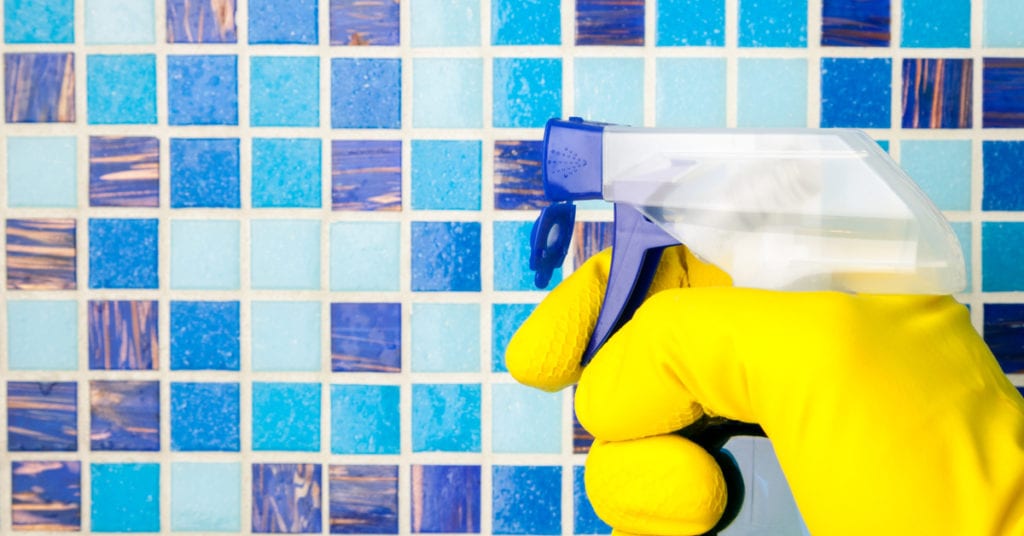Ways to Clean Pool Tile
The water in your pool contains 9 minerals, including calcium, sodium, and magnesium. As the pool’s water evaporates, the minerals stay behind. Over time they stick to the tiles and hide your pool’s beautiful finish.
If the minerals aren’t removed, they flake off and enter the pump system. Much like your home’s water heater, pool pumps are prone to scale buildup. Too much buildup forces the pump to work harder, raising your energy bill.
Learn how to clean pool tile without draining the pool to also save money on your water bill. Change into your swimsuit and use these pool tile cleaning tips to revive your pool.
1. How to Remove Calcium From Pool Tile Without Draining the Water
When your pool’s pH level soars, the alkalinity drops. The imbalance encourages calcium to stick to pool tile.
The water should have a pH of around 7.3 and alkalinity near 100. Use a water testing kit to see if the balance caused your calcium buildup problems.
If the test shows a high pH, lower it to the recommended level. If there is a calcium buildup treat the water with a calcium hardness dissolving remover. Sodium bisulfate removers are okay for occasional use. Most prefer to use muriatic acid because it doesn’t add sulfates to the water.
2. How to Remove Hard Water Stains from Pool Tile

Hard water stains appear on areas where water dries often. Thankfully, these stains are easier to remove than calcium buildup.
Items you’ll need to remove hard water stains:
- A soft scrubbing pad
- Rubber gloves
- Vinegar
- Spray bottle
Fill the spray bottle with an equal mix of water and vinegar. Spray the pool’s steps and edge tiles with hard water stains. Let the vinegar work for 20 seconds before scrubbing.
3. How to Clean Pool Waterline Tile
The faint line around your pool helps to signal when to fill it, but it’s also an eyesore. Next time the pool’s water level drops, grab your cleaning supplies.
4 easy steps to clean pool waterline tile:
- Wet the tile and a pumice stone
- Scrub gently to remove the first layer of buildup. Make sure not to scratch the tiles with the pumice stone
- Apply a calcium releaser according to the directions
- Continue to scrub lightly if needed
Use gloves and eye protection when working with calcium releaser. You may need to repeat the process, and the releaser can irritate the skin.
4. How to Clean Stubborn Buildup on Pool Tiles
Sometimes a pumice stone alone can’t clean pool tile with calcium buildup. Old calcium deposits have layers that take a week to chip away by hand.
For the stubborn calcium, try adding a nylon brush to your drill. Use the drill brush paired with a calcium releaser for the best results. The brush may damage any fragile tile, so test it in a hidden corner first.
If this is the case, it’s likely the time to call in a professional pool care, cleaning and maintenance company. You do not want to scratch those beautiful tiles.
Clean Pool Tile Can Extend Your Pool’s Lifespan
Your pool is a safe place to get away from the heat during the hot summer days, so make it the best it can be.
Clean pool tile isn’t just about having a beautiful pool, though. It’s also about keeping scale from building up in the pool’s pump system.
The pool tile should be cleaned a minimum of three times per pool season. The ways to clean pool tile we listed above may seem easy to do if you are handy; however, it is a delicate process not to damage and discolor the tiles. It also can be a timely project. If this is the case with you, consider bringing in a professional to help.
The team at Backyard Pool Specialists knows all the pool tile cleaning tricks. If you live in the Houston area and surrounding areas of Cypress, Spring, Conroe, Montgomery, The Woodlands, Katy, Tomball, and Magnolia, contact us about pool tile cleaning. We offer customers a free price quote on our services.



